Dear Studio Red,
This week you invented a new game. Can you tell your family how you play?
Love, Lauri and Emily
ZOOMING INTO OUR WEEK
INDOOR EXPLORE
How do we weave with a Y-stick?

We value the process of weaving. Children engage in a project that evolves over a length of time. there is great excitement and they marvel at how their work grows. They make choices envisioning how colors will look when they sit next to each other. They count the rings of color and Some create patterns as they build. They learn to move their hands together and to hold a mantra in their heads, over – under – over -under. They focus and the rhythm of the work takes them to a place of flow. They solve problems as yarn gets caught, looses its way or runs out. There is such pride in the finished work, such a feeling of success.



How do we make meaning of children's war play?


Luca and Case create and compare the cannons they build. They discuss the similarities and differences of their designs. We hear them listening to each other and building ideas. We value that they are comfortable to share their thinking.
I’m making a cannon. Luca
This is my cannon. Case
Now I need to make this part. Luca
They’re attached. Look, these two cannons are attached. Case
I made these two cannons. Luca
I’m soon gonna have three cannons. Case
I have three cannons. Luca
Nice! Oh nice! And I’m gonna have three after I make this one. Case
This is a real type of cannon, you know, Luca. Luca, I found a big cannon we can share. Case
That one can put our cannons on it. Luca
Only one at a time. Case
Yeah! Luca
Hi guys. Thomas
We’re making cannons. I’m gonna make a tank. Case
Can I play with you guys? Thomas
Sure! Case
How do children make sense of the conversations they hear and the images they see of weapons and fighting? As they create with materials, we gain insight into their understandings and seek to meet them where they are. We wonder what is driving their exploration and how we might support them in figuring out these deeper wonderings. Are they seeking to feel comfort? Are they seeking to connect? Are they seeking to make sense of what is powerful and what it means to cause hurt and to help? Each child comes to school with different experiences and different feelings. As adults, we too, come with our own feelings about war, weapons, and fighting. We want to encourage dialogue among everyone to create a supportive environment for children to process these themes. We believe we have an important role to play. As adults we can help them make sense of these themes while also helping to broaden their perspectives and the stories they tell.

Kaya builds a gun with cardboard and tape.
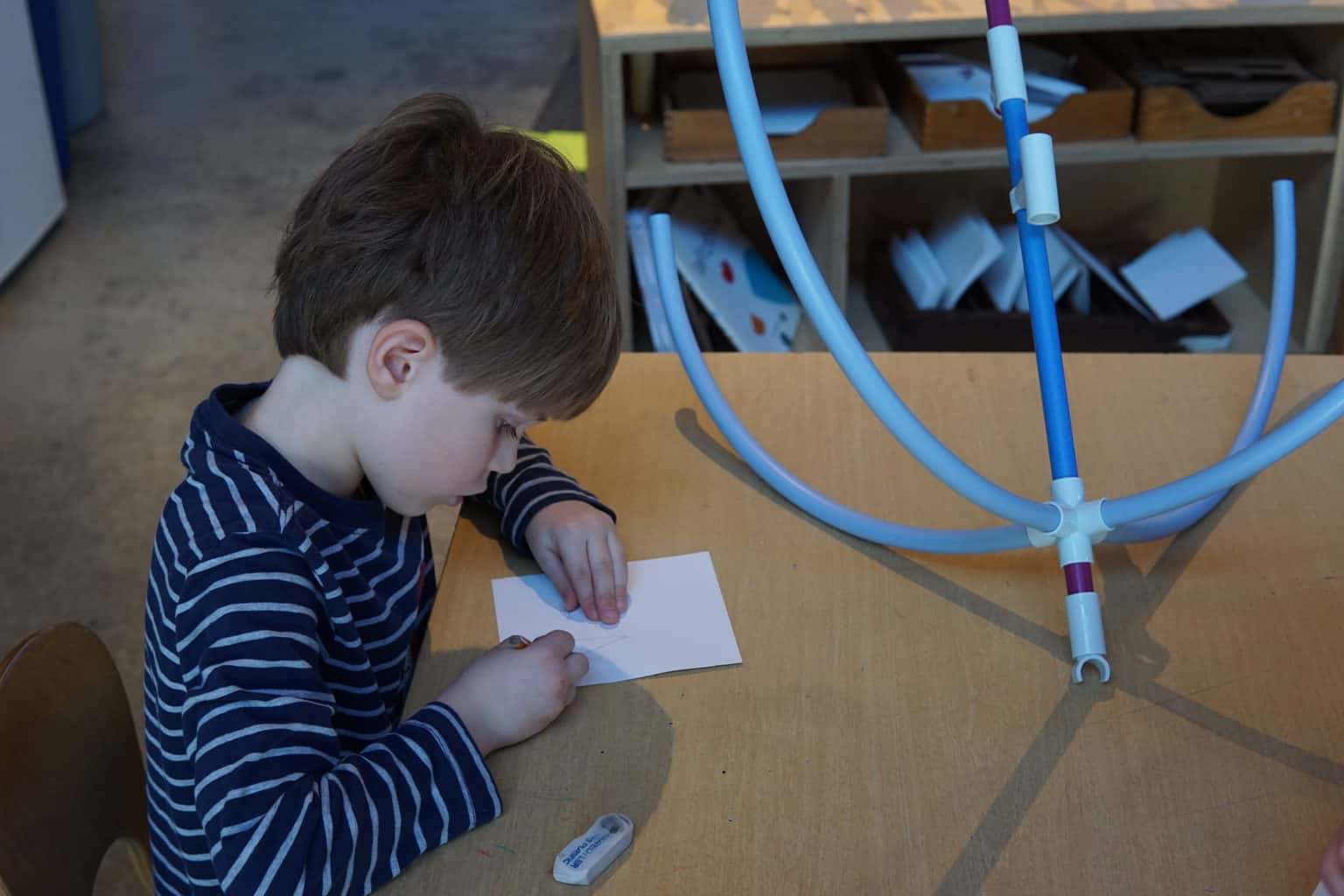
Jackson builds and draws a grappling hook. This was a tool he envisioned within the army play happening on the rug, for soldiers to use. “It grapples the mountain.”

Travers draws a soldier vacuuming blood in an army base.
How does documentation help us see our ideas together?
Our flag research is growing and so is our web of ideas and questions. A wall of living documentation, one that we add to over time with the children, allows the group to take ownership of their learning and connect their ideas. Documentation makes visible the many smaller moments of research that are taking place throughout our day: at rest when Louis draws the flag of Argentina; outside when Jackson envisions a pine branch as a flag to stop and start a group game; and during studio play when Travers shares a flag from home with his peers.

“This is a rainbow flag and this is a rainbow flag, but what’s different is the color and the top of that had the pink at the top.” Kieran
“It’s an electric flag.” Ian imagines a flag as he draws.

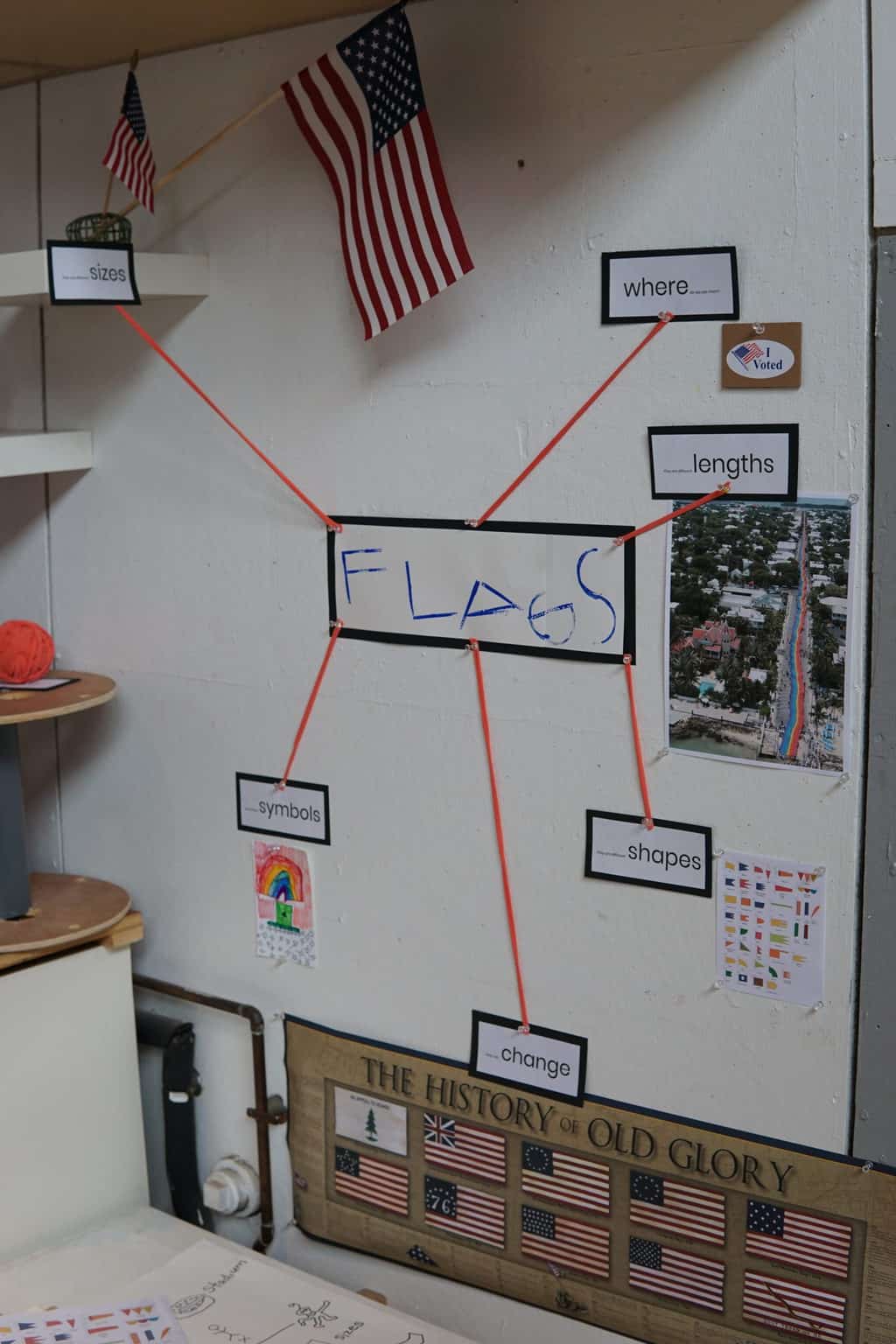



OUTDOOR EXPLORE
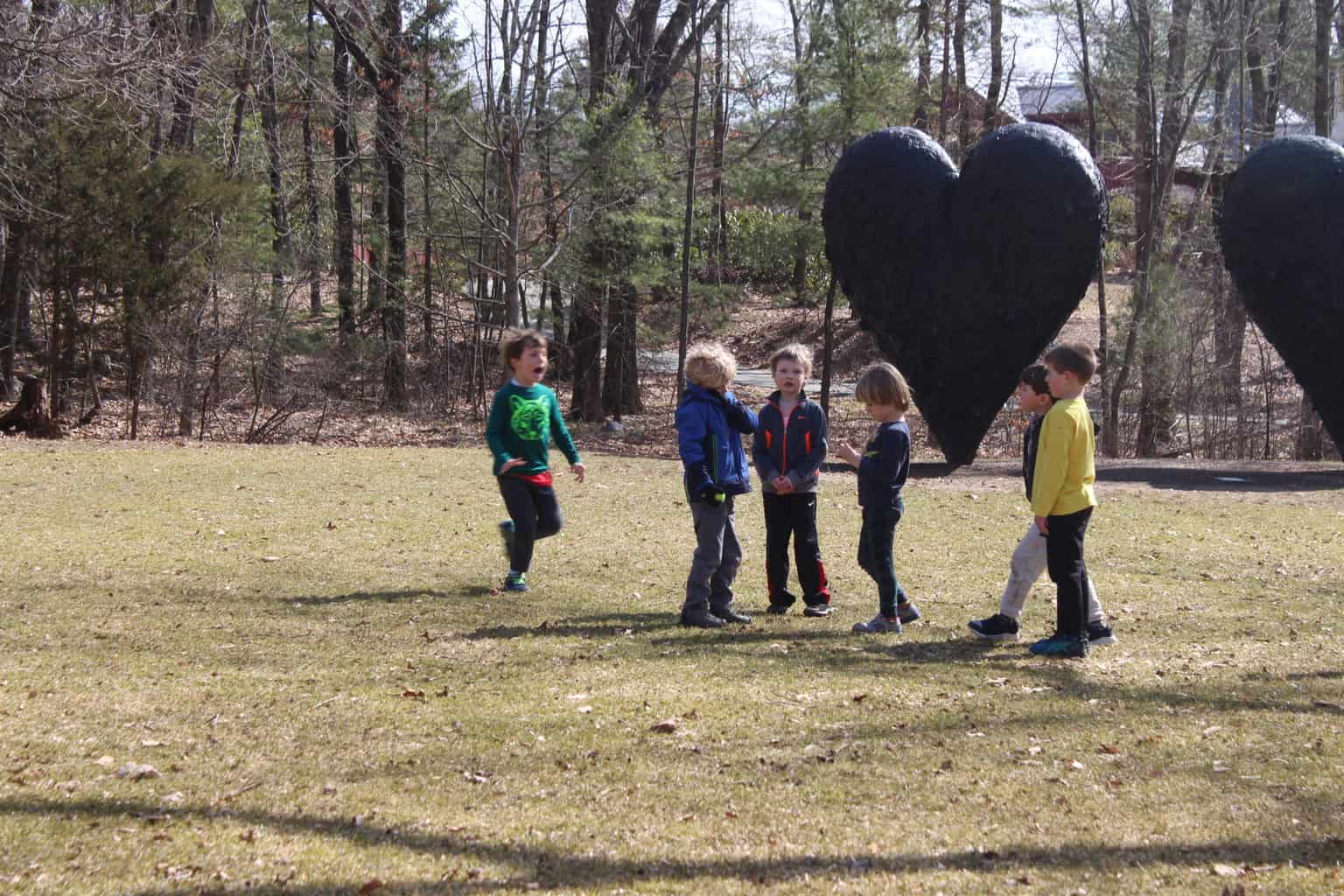
Children love games. At this age, they learning to and love to self-organize. They create the rules and the roles. The rules and roles are flexible and are often made as the game evolves. This play is highly creative. The power lies with the group to keep each other safe and to make sure the understandings are clear. Children gain autonomy and learn to know that they are in control of their own lives. Free play allows children to come and go as they please, to leave the game and return.


STORY WORKSHOP
During Story Workshop we are working in four new spaces with four new material collections to uncover stories. Each group visits a station twice over several weeks. During the first visit, they mess about and begin to envision story ideas, sometimes beginning with a character, an event, a setting, or a prop. Beginning with one idea, they add complexity. They learn to value collaboration, watching others as they manipulate materials to see what they can do and copying stories to try out new ideas. This process of play mirrors the writing process. As authors, children are editing their tales: they add details; take out parts; and scrap ideas all together to begin again. As they converse with one another, we hear their growing image of self as author.
“How’s your story going? What’s your story?” Case
“I’m actually going to build a new story.” Ruth
“Hey Emily, I changed my story.” Louis
“I’m going to remake my story. You knocked down my story.” Travers
“I’m making up a story just like playing.” Kaya





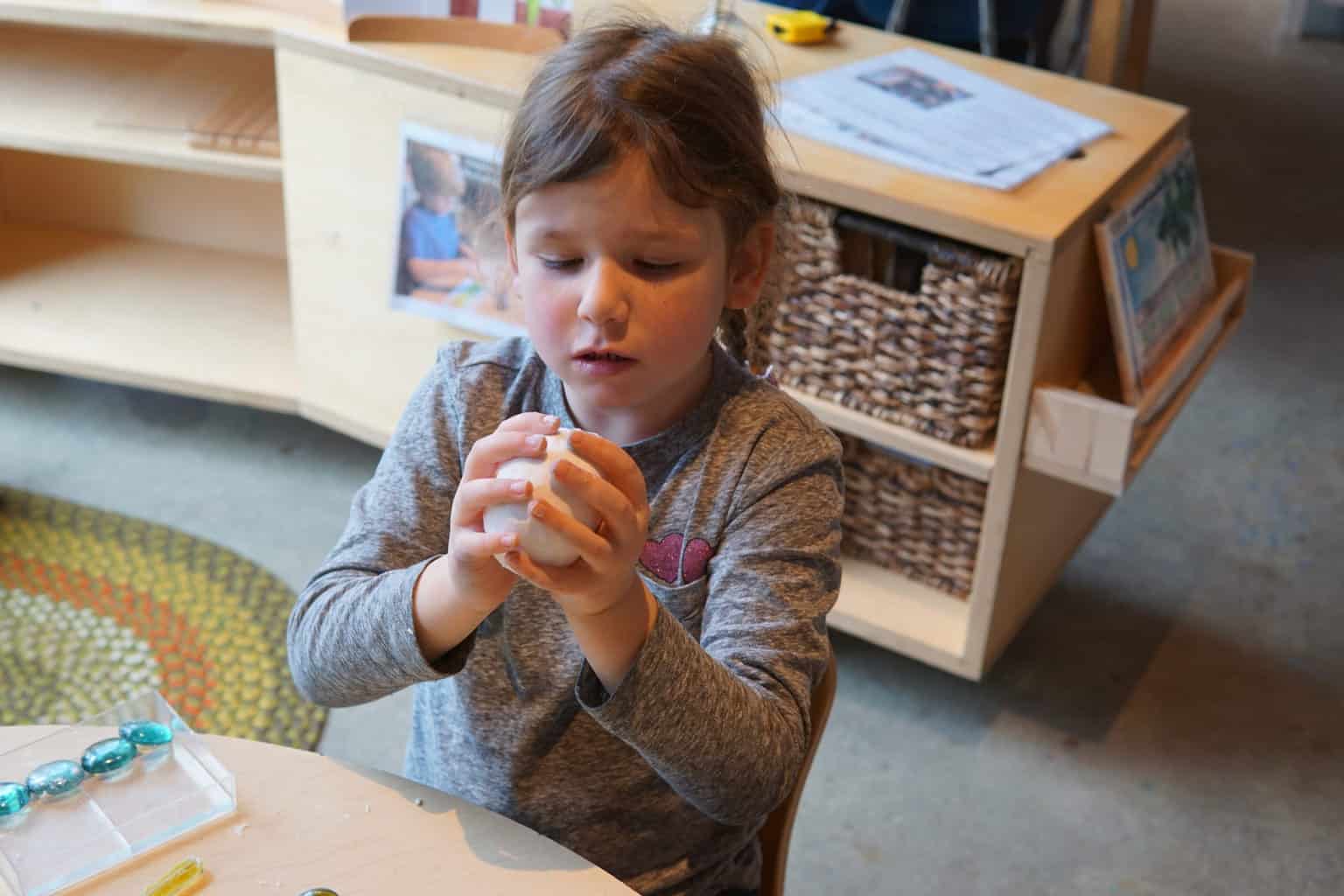


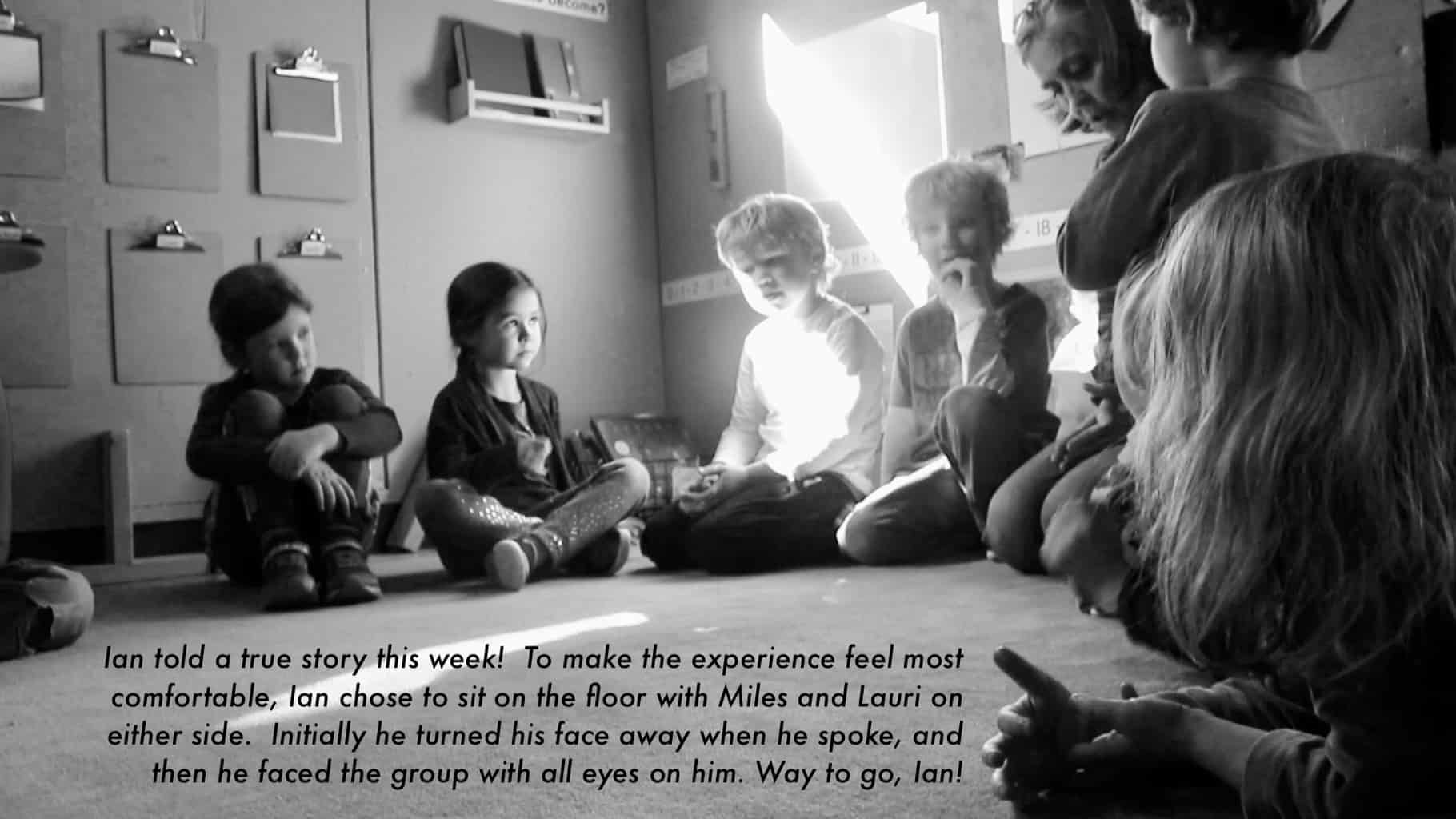
REFLECTIVE MEETINGS
What did Caroline experience when she was away from Studio Red?
Caroline reflects back on her experience. She tells her story to the whole group through a book, Caroline At The Hospital.
In Studio Red we have been talking a lot about what makes us uncomfortable. Caroline shared how she doesn’t like looking at some pages of her story that show her upset or with blood. She let the group know they might want to cover their eyes.
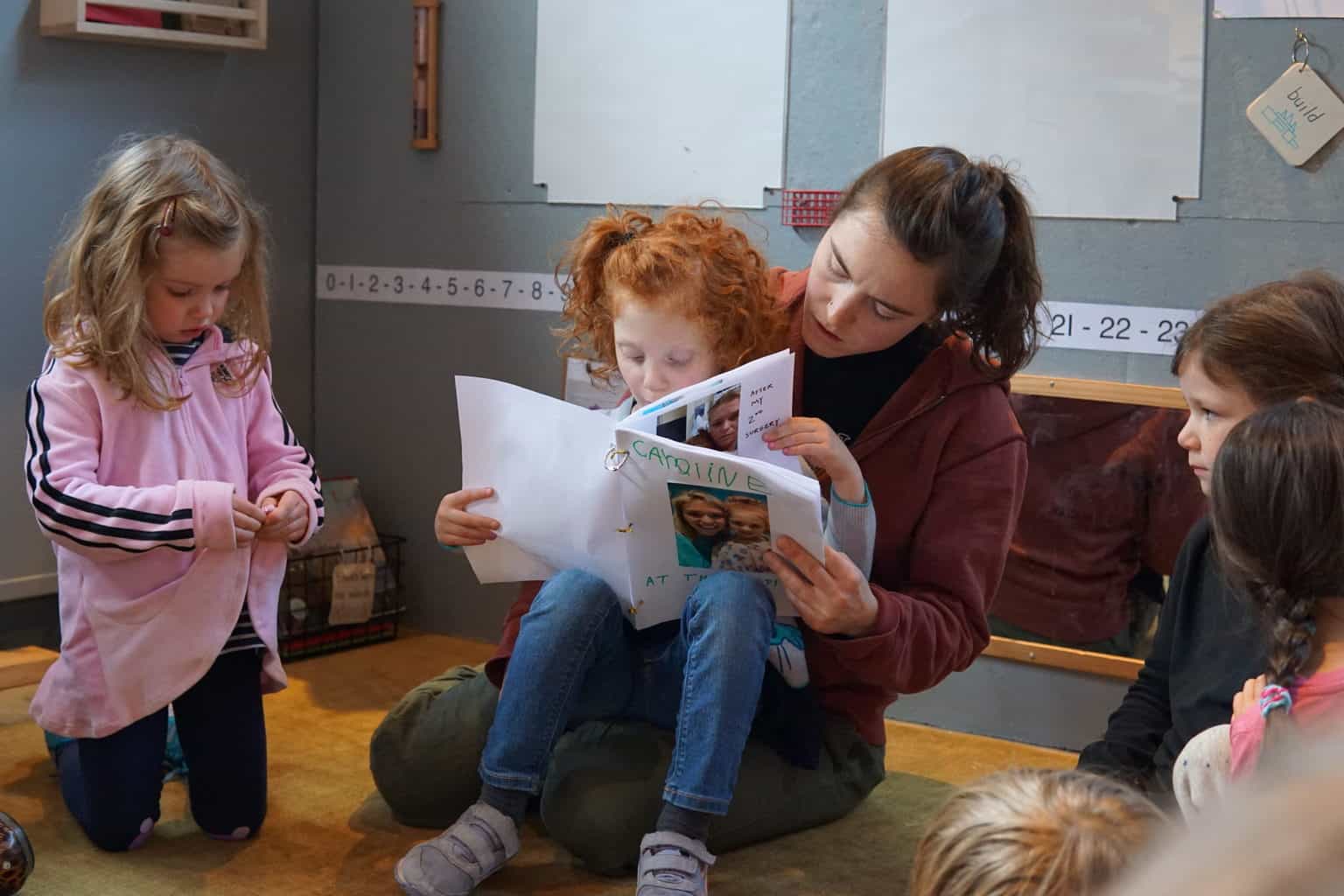

Was there a police officer in the ambulance? Miles
Did the surgery hurt? Ian
When did you go to the hospital? Luca
Why did you have to go to the hospital? Louis
How much did your eyes hurted?
What have we figured out about weaving?


